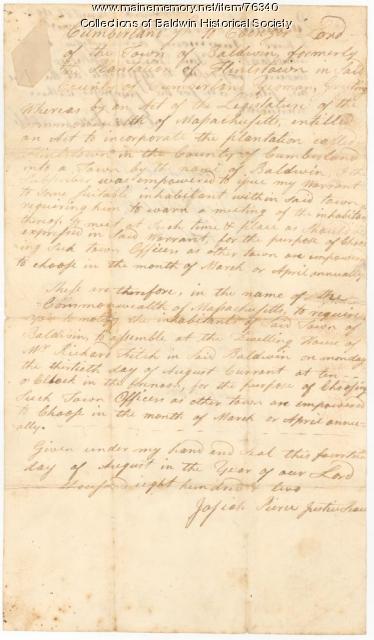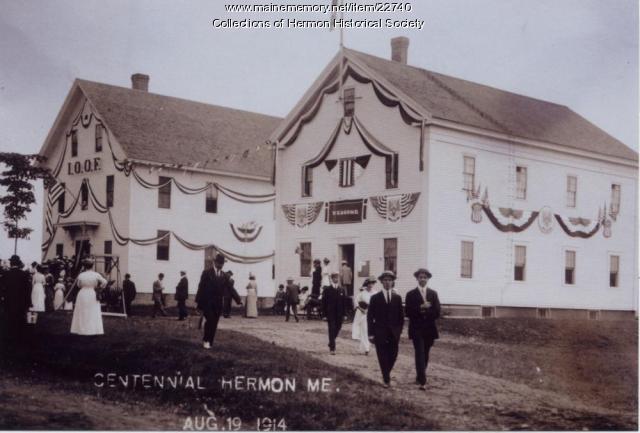Keywords: Town Meetings
Item 12349
Contributed by: Pejepscot History Center Date: 1954 Location: Topsham Media: Photograph, print
Item 76461
Town Meeting Warrant, Baldwin, 1802
Contributed by: Baldwin Historical Society Date: 1802-08-30 Location: Baldwin Media: Ink on paper
Exhibit
The Establishment of the Troy Town Forest
Seavey Piper, a selectman, farmer, landowner, and leader of the Town of Troy in the 1920s through the early 1950s helped establish a town forest on abandoned farm land in Troy. The exhibit details his work over ten years.
Exhibit
A Town Is Born: South Bristol, 1915
After being part of the town of Bristol for nearly 150 years, residents of South Bristol determined that their interests would be better served by becoming a separate town and they broke away from the large community of Bristol.
Site Page
Historic Hallowell - Meeting at Koussinok
"Meeting at Koussinok Kennebec River Hubbard Free Library Late in the fall of 1625 a small boat with seven men aboard slowly made its way up…"
Site Page
Farmington: Franklin County's Shiretown - Meeting House Park
"This green space became known as Meeting House Park. (And now you know that Church Street is named for John Church and not the North Church at the…"
Story
Biddeford City Hall: an in-depth tour of this iconic building
by Biddeford Cultural & Heritage Center Voices of Biddeford project
Visual tour and unique insights of Biddeford’s historical landmark
Story
Kolyn Mattson's Story
by Kolyn X. Mattson
Kolyn X. Mattson reflects on the impact of their mother's addiction and incarceration.
Lesson Plan
Building Community/Community Buildings
Grade Level: 6-8
Content Area: Social Studies
Where do people gather? What defines a community? What buildings allow people to congregate to celebrate, learn, debate, vote, and take part in all manner of community activities? Students will evaluate images and primary documents from throughout Maine’s history, and look at some of Maine’s earliest gathering spaces and organizations, and how many communities established themselves around certain types of buildings. Students will make connections between the community buildings of the past and the ways we express identity and create communities today.













